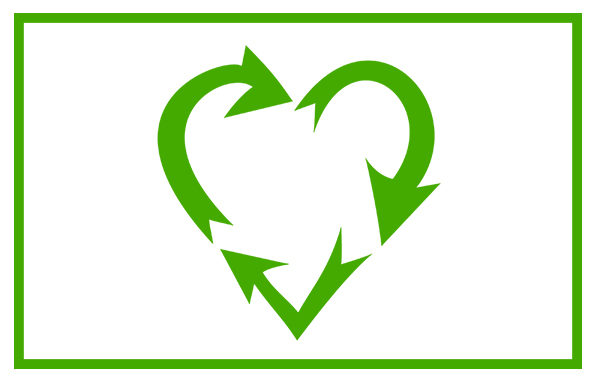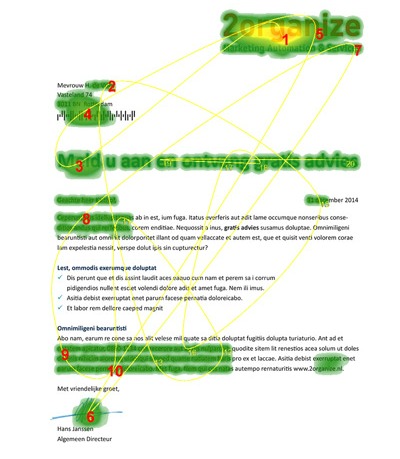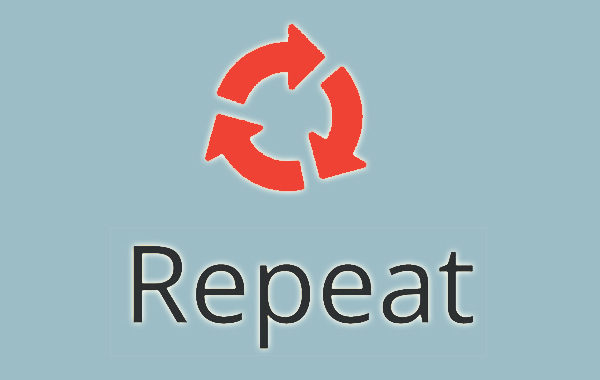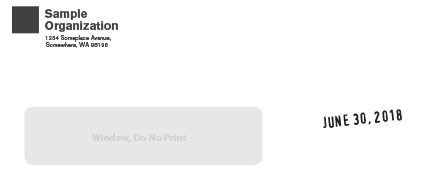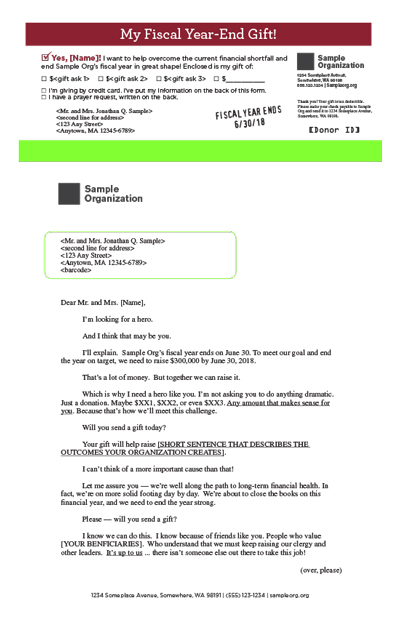Today we have an appeal letter from a small organization that shows how to repeat the main message – and do so without sounding repetitive.
I’m highlighting this because the main pushback I receive when teaching nonprofits that their fundraising should be “more repetitive” goes something like, “We can’t do that; we will sound ridiculous.”
Here’s a simple rule for how you can be repetitive but not sound ridiculous: each time you repeat what your donor’s gift will do, add another reason to give today.
The letter below – written by a non-professional with our coaching – does a great job of it. Let’s take a look… (click the image to see a larger version in PDF format)
I want you to notice two things. First, look at how many times the main message of “you can feed one person for $12.50 a month” is repeated. I count five places in the letter itself, one in the headline of the reply card, and one in each of the gift ask amounts.
Then notice how the idea is repeated, but the phrasing is a little different almost every time, to keep it interesting. That’s the secret!
The Same, But Different
Let’s break down each mention to see how they say the same thing – but with different emphasis and different spicing:
- In the large copy at the top of the page: “See how YOU can feed one person for $12.50 a month!” That lets the donor know, clearly and immediately, what their gift today will do.
- 5th paragraph: “Your generous donation of $12.50 will help begin the Thompson’s journey back to financial stability and security with one box of food.” That adds a reason to give: the donor’s gift provides a whole box of food, and that one box starts the beneficiary’s journey. That’s a great deal for $12.50!
- Blue call-out copy: “What I got was so much more than a box of food.” That helps the donor know that the organization does so much more than just provide a box of food.
- 9th paragraph (in blue): “Your generous donation of $12.50 by July 15th will provide one person with 4 boxes of food this month.” The donor hears two more reasons to give here: that their gift provides not just one, but four boxes of food, and that there is a deadline by which they need to respond.
- In the P.S.: “Just $12.50 provides 4 boxes of food to someone in your community who just needs a helping hand to get back on their feet!” This reinforces what the donor’s gift will do, and frames it as a way to “give a helping hand to help a person get back on their feet again.”
What the donor’s gift will do is clearly described in the beginning of the letter. Then each subsequent time it is repeated, another reason to give today is added.
>>> What could have felt repetitive instead feels really helpful to a donor. <<<
This is a perfect example of a principle we teach all the time: your fundraising will be more successful if you go deep on one specific part of what your organization does (in this case the power of a box of food) instead of listing all of the things your organization does.
From the Donor’s Point of View
Here’s the thing: to your donor, a letter like this feels like your organization is focused. To your donor, this feels like you are showing her exactly what she can do to have the largest, most powerful impact.
To your donor, that’s really attractive.
Sure, it might still feel a bit repetitive to you. It might even feel a skosh repetitive to a donor who reads the whole thing – but remember that most donors won’t read the whole thing!
Can We Help You?
Want to learn how to think and write like this – and start raising more money with your next appeal or email? Because you don’t have to be a professional writer to raise lots of money. Get in touch!

